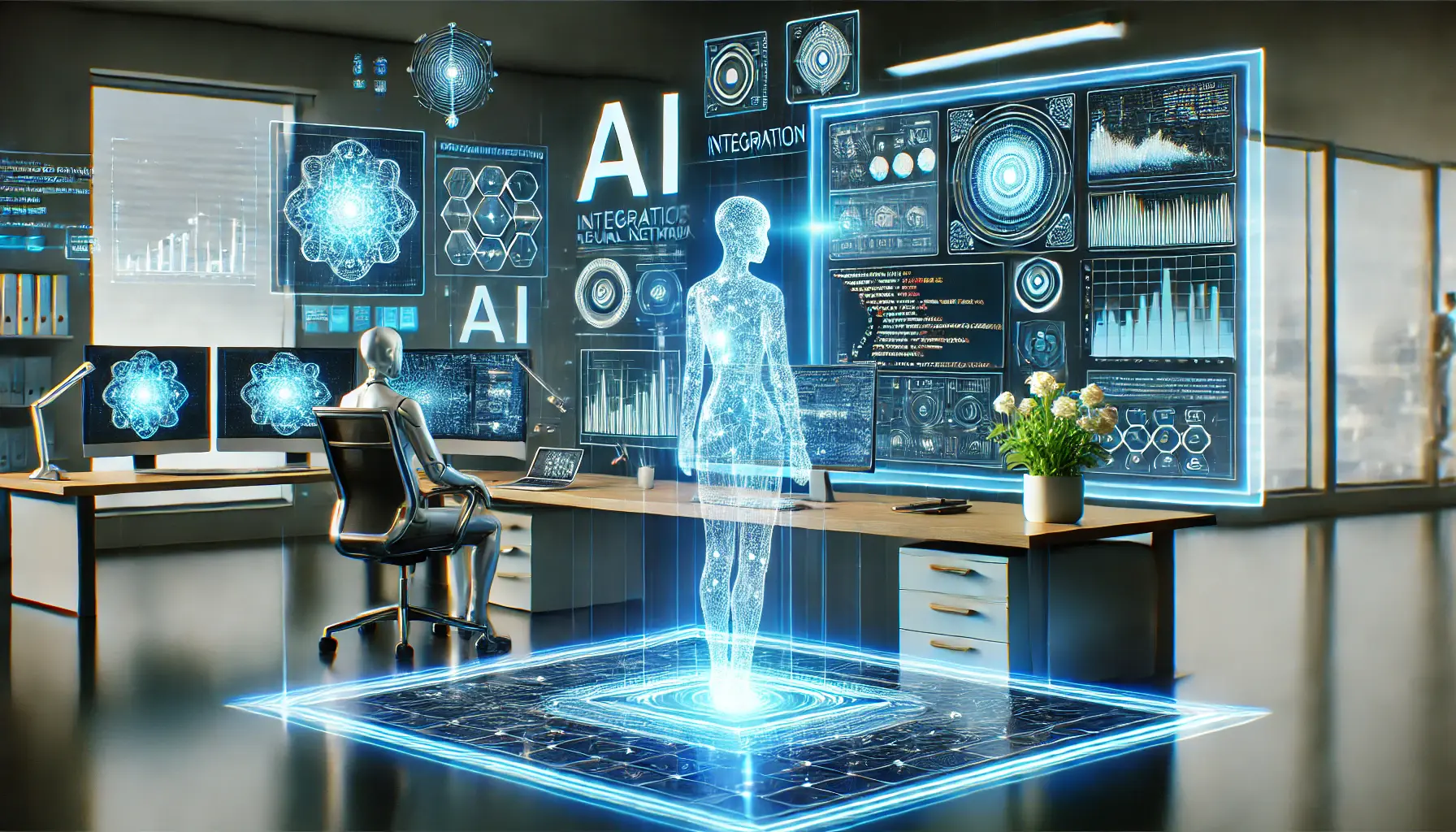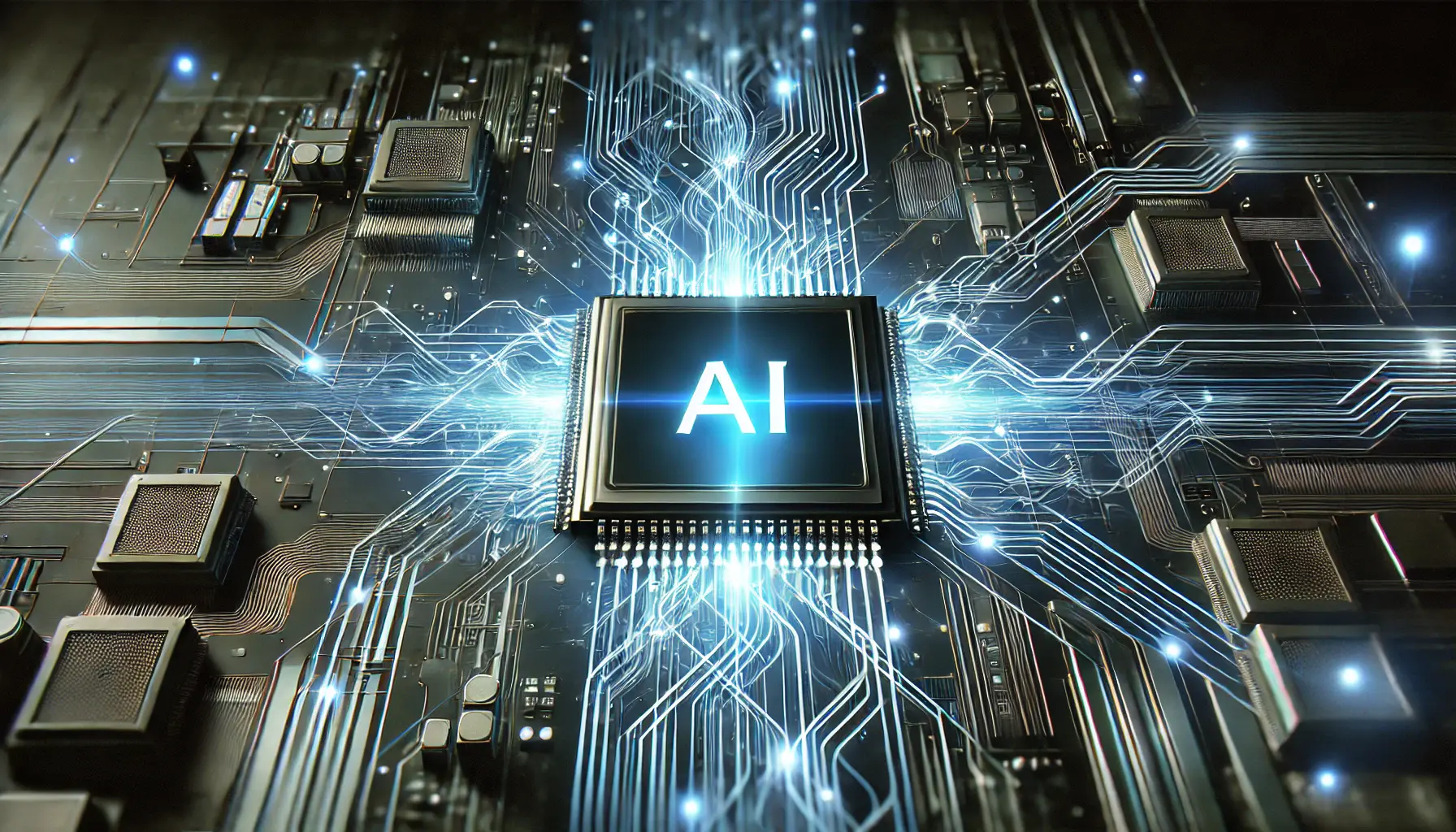The advent of artificial intelligence (AI) technologies has revolutionized the way we interact with digital information, offering unprecedented opportunities for enhancing productivity, creativity, and access to knowledge.
Among these innovations, Google’s Bard AI stands out as a significant leap forward, promising to redefine our engagement with the web and AI-driven communication.
However, as with any groundbreaking technology, Bard comes with its own set of limitations and challenges that users and developers alike must navigate.
Google’s Bard, designed to be a conversational AI that leverages the power of language models, aims to provide users with accurate, relevant, and engaging responses across a wide array of topics.
Despite its advanced capabilities, Bard’s performance is not without its flaws.
Understanding these limitations is crucial for users to set realistic expectations and for developers to identify areas for improvement.
This article delves into the core challenges associated with Bard, offering insights into the nuances of its operation and the impact of its limitations on user experience.
- Contextual Understanding and Misinterpretation
- Biases and Ethical Considerations
- Data Privacy and Security Concerns
- Dependency and Overreliance Issues
- Technological Limitations and Evolution
- Integration Challenges with Existing Systems
- Future Prospects and Development Pathways
- Embracing the Future with Google’s Bard AI
- FAQs on Google Bard AI Limitations
Contextual Understanding and Misinterpretation
Challenges in Grasping Complex Contexts
The ability of Bard to comprehend and process complex contexts is one of its most significant challenges.
Despite its advanced algorithms and vast database, Bard sometimes struggles to fully grasp the nuances of certain topics, leading to oversimplifications or inaccuracies in responses.
This limitation becomes particularly evident when dealing with subjects that require deep understanding or when interpreting the intent behind user queries.
For instance, when users pose questions that involve intricate details or specialized knowledge, Bard may provide responses that, while technically correct, miss the essence of the query.
This issue not only affects the quality of the interaction but also highlights the gap between human cognitive abilities and AI’s current understanding capabilities.
Addressing Misinterpretations
Misinterpretation of user intent or content is another area where Bard’s limitations come to light.
The AI’s processing mechanism, based on patterns in data it has been trained on, can lead to misunderstandings, especially in queries that are ambiguous or have multiple interpretations.
This can result in responses that, although related to the keywords within the query, do not address the user’s actual needs or questions.
To mitigate these challenges, ongoing improvements in natural language processing (NLP) techniques and more sophisticated training datasets are essential.
Enhancing Bard’s ability to discern context and user intent more accurately will be crucial in overcoming these hurdles, ensuring that the AI can provide more relevant and precise answers.
While Bard’s potential to transform our digital interactions is immense, recognizing and addressing its limitations in contextual understanding and misinterpretation is vital for its evolution.
Biases and Ethical Considerations
One of the inherent challenges in developing AI technologies like Google’s Bard is the risk of encoding biases into the AI’s responses.
These biases can stem from the data used to train the AI, reflecting historical, cultural, or societal prejudices that may inadvertently influence the AI’s output.
Addressing these biases is not only a technical challenge but also an ethical imperative to ensure that AI technologies promote fairness and inclusivity.
The ethical considerations surrounding Bard’s deployment extend beyond bias mitigation.
They encompass the responsibility of accurately representing information without perpetuating stereotypes or misinformation.
This aspect of AI development requires a multifaceted approach, combining technological solutions with ethical guidelines to steer the AI’s learning process and output.
- Identifying and Mitigating Biases: The process of identifying biases within Bard involves analyzing the datasets it has been trained on for any skewed representations or exclusion of certain perspectives. Developers must employ strategies such as diversifying training data and implementing algorithms that can detect and correct biased patterns.
- Ensuring Ethical Use: Beyond technical adjustments, establishing ethical guidelines for AI use is crucial. This includes setting boundaries for the types of queries Bard can respond to, the manner of its responses, and ensuring that its outputs do not harm individuals or groups. Transparency about the AI’s capabilities and limitations also plays a vital role in ethical AI use.
The challenge of bias and ethical considerations in AI is ongoing, requiring continuous effort from developers, researchers, and policymakers.
By prioritizing these aspects, the development of Bard and similar AI technologies can progress in a manner that respects and enhances human dignity and diversity.
The journey towards an unbiased and ethically responsible Bard is complex but essential for the future of AI-driven communication.
Data Privacy and Security Concerns
As Bard interacts with users, it processes a vast amount of personal and sensitive information, raising significant data privacy and security concerns.
Ensuring the confidentiality, integrity, and availability of user data is paramount to maintaining trust and safeguarding against potential breaches.
Protecting User Data
The collection, storage, and processing of user data by Bard necessitate robust security measures to prevent unauthorized access and data leaks.
Encryption, access controls, and regular security audits are critical components of a comprehensive data protection strategy.
Moreover, transparency regarding data handling practices helps users make informed decisions about their interactions with Bard.
Compliance with Privacy Regulations
Adhering to global data protection regulations, such as the General Data Protection Regulation (GDPR) in the European Union and the California Consumer Privacy Act (CCPA) in the United States, is essential for Bard.
These regulations mandate strict guidelines on data collection, processing, and user consent, ensuring that users’ privacy rights are respected and protected.
- Implementation of data minimization principles to ensure that only necessary data is collected and processed.
- Providing users with clear options to manage their data, including access, correction, and deletion rights.
- Regularly updating privacy policies to reflect changes in data handling practices and regulatory requirements.
Addressing data privacy and security concerns is an ongoing process that requires constant vigilance and adaptation to emerging threats and regulatory changes.
By prioritizing these aspects, Bard can offer a safer and more trustworthy experience for its users.
Ensuring data privacy and security is fundamental to the ethical development and deployment of AI technologies like Bard.
Dependency and Overreliance Issues
The convenience and efficiency of Bard can lead to a dependency that might inhibit critical thinking and problem-solving skills among users.
This overreliance on AI for information retrieval and decision-making poses significant challenges, particularly in educational and professional settings.
Impact on Learning and Cognitive Development
While Bard serves as a powerful tool for accessing information, its pervasive use can impact the way individuals learn and process information.
There’s a growing concern that reliance on AI for quick answers could diminish users’ ability to conduct thorough research, critically evaluate sources, and develop independent thought.
Encouraging a balanced approach to technology use is essential to mitigate these effects.
Professional Dependency
In professional environments, Bard’s capabilities can streamline workflows and enhance productivity.
However, an overdependence on AI for tasks such as data analysis, content creation, and problem-solving could potentially reduce the development of these skills among professionals.
It’s crucial for organizations to foster environments where AI complements human skills rather than replaces them.
- Implementing training programs that emphasize critical thinking and problem-solving skills alongside AI literacy.
- Setting guidelines for the appropriate use of AI tools, ensuring that they support rather than supplant human intelligence and creativity.
- Encouraging a culture of continuous learning and adaptation, where professionals are motivated to stay abreast of technological advancements and their implications.
Addressing the challenges of dependency and overreliance on Bard requires a concerted effort from educators, employers, and technology developers.
By promoting a balanced and critical approach to AI use, we can harness the benefits of Bard while fostering a resilient and adaptable society.
Balancing the use of Bard with the development of independent cognitive skills is key to leveraging AI effectively.
Technological Limitations and Evolution
The development of Bard and similar AI technologies is a testament to the rapid advancements in the field of artificial intelligence.
However, these technologies are not without their technological limitations, which can affect their performance, scalability, and adaptability.
Understanding these limitations is crucial for both users and developers to set realistic expectations and drive future innovations.
Current Performance Constraints
Despite its impressive capabilities, Bard is subject to performance constraints related to processing speed, understanding complex queries, and generating responses that are both accurate and contextually appropriate.
These constraints are often tied to the underlying hardware and software infrastructure, as well as the complexity of the algorithms that power Bard.
Efforts to improve Bard’s performance involve optimizing its algorithms for efficiency, investing in more powerful computing resources, and refining its language models to better understand and interpret user queries.
These improvements are essential for enhancing Bard’s responsiveness and reliability.
Future Directions for AI Evolution
The future evolution of Bard and other AI technologies will likely focus on overcoming current limitations and expanding their capabilities.
This includes advancing natural language processing techniques, integrating multimodal inputs (such as images and voice), and developing more sophisticated models of human-AI interaction.
- Exploring new architectures for neural networks that can process information more efficiently and accurately.
- Investing in research to understand the cognitive processes underlying human communication, with the aim of creating AI that can more naturally interact with users.
- Developing ethical frameworks and guidelines to govern the advancement and application of AI technologies, ensuring they are used responsibly and for the benefit of society.
The technological limitations of Bard represent both challenges and opportunities for growth.
As we continue to push the boundaries of what AI can achieve, the lessons learned from addressing these limitations will guide the development of more advanced, useful, and ethical AI systems.
The evolution of Bard hinges on overcoming technological limitations and embracing innovative solutions.
Integration Challenges with Existing Systems
Integrating Bard into existing digital ecosystems presents a unique set of challenges.
These range from technical compatibility issues to ensuring that Bard’s responses align with the specific needs and contexts of different applications.
Successfully navigating these challenges is crucial for leveraging Bard’s capabilities across various platforms and services.
Technical Compatibility and Interoperability
One of the primary hurdles in integrating Bard is ensuring technical compatibility with existing systems.
This includes compatibility with various operating systems, software frameworks, and digital interfaces.
Achieving interoperability requires a flexible API (Application Programming Interface) that allows Bard to communicate effectively with other software applications, databases, and digital services.
Developers must also consider the scalability of integrations, ensuring that Bard can handle varying levels of demand without compromising performance.
This involves optimizing Bard’s infrastructure for high availability and low latency, crucial for applications that require real-time interactions.
Customization for Specific Use Cases
Beyond technical integration, customizing Bard to meet the specific needs of different industries and applications poses another challenge.
Each sector, from healthcare and education to finance and entertainment, has unique requirements and contexts that Bard must adapt to in order to provide relevant and valuable responses.
- Developing industry-specific models that can understand and respond to the particular jargon and nuances of different fields.
- Implementing machine learning techniques that allow Bard to learn from interactions within specific contexts, enhancing its accuracy and relevance over time.
- Ensuring that Bard’s responses adhere to regulatory and ethical standards relevant to each industry, particularly in sensitive areas such as healthcare and finance.
Addressing the integration challenges with existing systems is a complex but essential task for maximizing Bard’s potential.
Through careful planning, customization, and ongoing development, Bard can become a versatile tool that enhances a wide range of digital experiences.
Assuming Bard can be seamlessly integrated into any system without customization or technical adjustments is a common misconception.
Future Prospects and Development Pathways
The journey of Bard AI from its inception to its current state is a testament to the dynamic nature of artificial intelligence.
As we look to the future, the prospects for Bard and similar AI technologies are boundless, with potential developments poised to further revolutionize how we interact with digital information and each other.
Advancements in AI and Machine Learning
The core of Bard’s future development lies in the continuous advancements in AI and machine learning technologies.
Researchers are constantly exploring new algorithms, data processing techniques, and learning models that could enhance Bard’s understanding, responsiveness, and adaptability.
These advancements couldlead to more nuanced and sophisticated interactions, enabling Bard to provide even more personalized and context-aware responses.
Expanding Bard’s Capabilities
Future iterations of Bard may see it expanding beyond text-based interactions to include voice recognition, image analysis, and even real-time video processing.
This multimodal approach would allow users to interact with Bard in a more natural and intuitive way, mirroring human-like conversations and understanding.
Furthermore, integrating Bard with IoT (Internet of Things) devices and smart home technologies could open new avenues for AI-assisted living, making everyday tasks easier and more efficient.
- Enhancing Bard’s emotional intelligence to better recognize and respond to the emotional state of users, providing a more empathetic and supportive interaction experience.
- Improving Bard’s ability to learn in real-time from user interactions, enabling it to adapt its responses based on individual preferences and feedback.
- Developing more robust privacy-preserving technologies to ensure that as Bard becomes more integrated into our lives, it does so in a way that respects and protects user data.
The future of Bard and AI at large is not just about technological advancements but also about how these technologies are integrated into society.
Ethical considerations, user trust, and the democratization of AI are critical factors that will shape the development pathways of Bard.
By addressing these aspects, the future of Bard looks promising, offering a glimpse into a world where AI enhances human capabilities and enriches our lives in myriad ways.
The evolution of Bard reflects the broader trajectory of AI, moving towards more personalized, intuitive, and ethically responsible technologies.
Embracing the Future with Google’s Bard AI
As we have explored the multifaceted landscape of Google’s Bard AI, it’s clear that while the technology presents groundbreaking opportunities, it also faces significant limitations.
These challenges, ranging from contextual misunderstandings to ethical and privacy concerns, underscore the complexity of developing and deploying advanced AI systems.
However, they also highlight the dynamic nature of AI research and development, where each limitation presents a new avenue for innovation and improvement.
Navigating Limitations to Unlock Potential
The journey of understanding and addressing the limitations of Bard AI is not just about enhancing a technology; it’s about shaping the future of human-AI interaction.
By critically examining issues such as data privacy, bias, and technological constraints, developers and users alike can contribute to a more ethical, transparent, and effective use of AI.
The evolution of Bard AI, with its focus on overcoming these challenges, is a testament to the relentless pursuit of excellence in the AI domain.
Collaborative Efforts for a Brighter Future
The future prospects of Bard AI depend on a collaborative effort that spans across disciplines, industries, and borders.
It involves not only technologists and developers but also ethicists, policymakers, and end-users.
Together, these stakeholders can drive the development of Bard AI towards a future where it not only enhances our capabilities but does so in a way that is responsible, equitable, and aligned with human values.
- Continued investment in research and development to push the boundaries of what AI can achieve.
- Open dialogues and partnerships between technology companies, regulatory bodies, and civil society to ensure that AI development is guided by ethical principles.
- Education and awareness initiatives to equip users with the knowledge and skills to effectively interact with AI technologies like Bard.
In conclusion, the limitations of Google’s Bard AI are not roadblocks but rather stepping stones towards a more advanced and human-centric AI future.
By embracing these challenges with a spirit of innovation and collaboration, we can unlock the full potential of Bard AI and pave the way for a future where AI and humans coexist in harmony, enhancing each other’s capabilities and enriching the tapestry of human experience.
FAQs on Google Bard AI Limitations
Explore common inquiries about the capabilities and constraints of Google Bard AI.
Google Bard AI’s main limitations include occasional inaccuracies, context misunderstanding, and a tendency towards biased responses.
While Bard AI is advanced, it sometimes struggles with very complex queries or topics requiring deep, nuanced understanding.
Like any AI trained on large datasets, Bard can exhibit biases present in its training data, affecting its responses.
Google Bard AI employs robust encryption and privacy measures, but users should remain aware of data handling practices.
No, Bard AI is designed to assist and enhance human decision-making, not replace it, emphasizing support over substitution.
Bard AI continuously learns from new data, but its adaptability is limited by the frequency of its training updates.
Many industries, including education, healthcare, and customer service, can benefit from Bard AI’s information processing capabilities.
Yes, ethical concerns such as data privacy, bias, and the potential for misinformation guide the responsible use of Bard AI.













